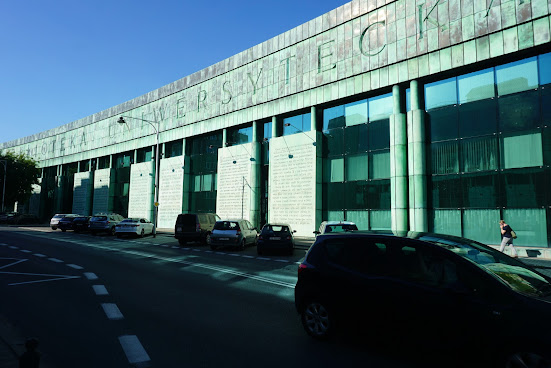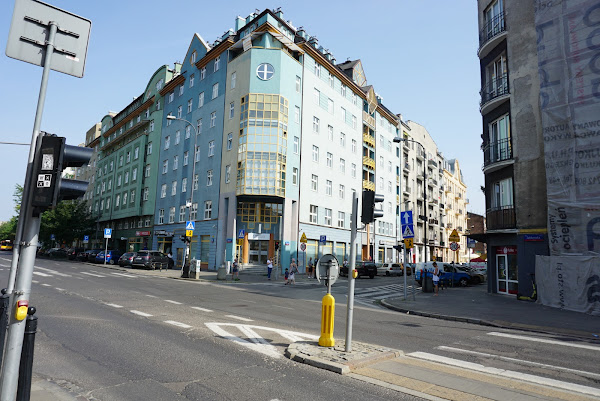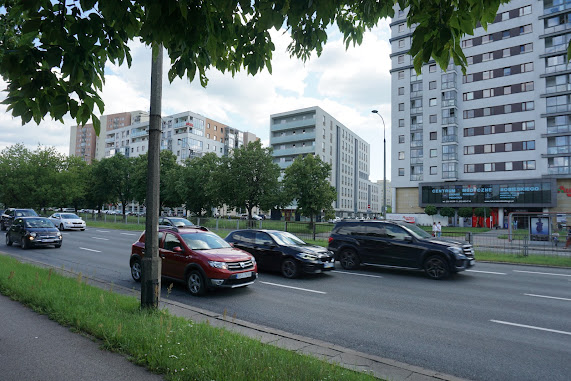The New Warsaw
#Warsaw tour guide #Warsaw city guide # guided tour in warsaw #Warszawa tour guide #Warszawa city guide #guided tour in Warszawa
The new Warsaw after 1989 is a daunting task, as there has been a building boom ever since communism disappeared from the capital (and even before that, as discussed in Communism in Warsaw).
You can get a really good impression of the new Warsaw if you take the lift up to the viewing terrace of the Palace of Culture and try to get a closer look at the skyscrapers, almost all of which have been built in the last 30 years. There’s a plan to it, you feel the air flushing through the city, and it clearly gives the impression of a dynamic metropolis.
What’s particularly striking when you arrive in the centre of Warsaw are the many skyscrapers that give you the feeling of being in Manhattan. The high-rise developments have also had their opponents from groups who would rather see Warsaw modelled on the Renaissance city, but their voices have not been very vocal. Warsaw is, after all, the capital of a country with 38 million inhabitants, and all the major companies have headquarters – or at least a representation – in the city centre. This creates a buzzing and dynamic atmosphere that fits perfectly with the high-rise buildings.
But there are high-rise buildings and then there are high-rise buildings – of another kind. When the planned economy stopped in 1989, the American Wild West went into action. Prefabricated concrete blocks were replaced by visions of a new Warsaw, and everyone clapped with delight as they watched the new times come to the capital. Much of what was built was very fashionable, but the idea of wild luxury usually only lasted until the next building came along. Both office palaces and postmodernist residential buildings were built for the elite, but very often the buildings of the 1990s (especially the first half) inherited the tendency for shoddy construction from the 1980s, and often the building materials were simply of poor quality. Some of the buildings from the 1990s are now being demolished to make way for more modern buildings.
The new Warsaw is everywhere, but there are of course areas where the new is more intensive than elsewhere, such as along the metro line, which was established in 1995.
Metro Centrum
Here, the elegant pre-war Warsaw blends with the monumental buildings from the communist area and the capitalist city that has emerged in recent decades. However, many of the communist buildings have now also been refurbished or demolished and rebuilt in a modern version.
These include the Hotel Novotel from 1972, which in 2005 was thoroughly modernised and given a new attractive facade, while in 2019 the classic rotunda was rebuilt in a modern form together with the office building behind it.

To the right the white renovated facade of Novotel, to the left the office building from 2019. Below this is the newly constructed rotunda.
Złota 44
– Address: 44 Złota Street. The 192 metre high building has 54 floors with 287 apartments and was completed in 2013. It is currently the tallest residential building in Europe.
Here, one of Poland’s most expensive apartments was sold in 2022 – an entire floor with 480 square metres for 22.9 million zlotys, i.e. 48,000 zlotys or 11,000 EUR per square metre. Often referred to as The Sail, the building was designed by renowned American architect of Polish origin, Daniel Libeskind.

Złota 44 – Europe’s tallest residential building
Złote terasy (Golden Terraces)
– located at 59 Złota Street, just behind the just mentioned skyscraper.
Shopping centre, cinema complex and office space from 2007 with 200 shops and 30 restaurants. Located next to the Central Railway Station and the Palace of Culture, you can’t really avoid the centre, which is an ideal shopping option when in the city.

Close-up of the golden terraces with its undulating plexiglass roof
Marriott
Address: Aleje Jerozolimskie 65/79, right opposite the central railway station.
The Marriott was the first privately financed high-rise to be built in Poland. In early 1977, a joint venture was formed between a state-owned company and a foreign investor. However, the project progressed slowly and it wasn’t until it was taken over by the Marriott hotel chain that it was completed in 1989, the same year communism fell in Central Europe.
In 1989, it was one of the first five-star hotels in Poland, and the building’s uncomplicated yet elegant form heralded a new era. With a height of 140 metres to the roof and 42 floors, it was only 50 metres lower than the city’s landmark, the Palace of Culture across the street.

Hotel Marriott – a beer at the top-floor bar also offers a great view of the city
Metro Rondo Daszyńskiego and Metro Rondo ONZ
The Rondo Daszyńskiego and Rondo ONZ roundabouts are less than 500 metres apart in a straight line through Prosta Street. At Rondo Daszyńskiego, continue along Towarowa Street, and at Rondo ONZ is Jan Paweł 2 Avenue, named after the Polish Pope.

Rondo ONZ (UN Roundabout) filled with high-rise buildings. And it goes on and on if you walk down the street.
The area is filled with representatives of all the major companies operating in Poland, it’s where young people with ambitions get a job, and it’s where the early construction of office space in high-rise buildings began, satisfying the needs of tenants hungry for prestigious office space.
I’m reluctant to single out individual buildings; if you want to experience how Warsaw has evolved over the last 30 years and also see the city’s vibrant business life, simply take a half-hour stroll along Towarowa and Jan Paweł 2, picking out the old communist-era properties and contrasting them with the new styles. And you can have fun guessing which decade the new office blocks were built in (1989-1999, 2000-2009, 2009 – today).

Towarowa Street by Rondo Daszyńskiego, just opposite the Warsaw Uprising Museum
One of the newer high-rise buildings is Q22 at number 22 Jan Paweł II, right on the corner of Grzybowska Street and opposite the large state insurance company, PZU, which has a 94 metre high building from 2000, while Q22 dates from 2016.

On the right the two-part Q22, on the left side of Grzybowski Street the PZU tower
At 155 metres to the roof, the Q22 is more than 50% higher than the PZU tower. The Q in the building’s name stands for “quartz”, a type of crystal that refers to the building’s glass façade.
At short distance from Rondo ONZ. You find Cosmopolitan on Twarda street 2/4

This 160 metre high building was built in 2014 and is predominantly residential. The building is essentially classical in form, but is characterised by a prominent part that hangs on huge inclined steel beams, which are attached to the foundation for every 10 floors. A lower part of the building is intended for offices.
The Dutch Embassy
Address: Kawalerii 10.
The Dutch Embassy from 2004 proves that it’s not only high-rise buildings that help create the new Warsaw.
The fence around the embassy protects against murderous terrorists, but is also friendly and inviting in its shape and it blends in with the surrounding vegetation. The embassy appears light and classic, with great lighting. In short – a building that shows friendliness and determination, while making it clear that green politics is here to stay.

The complex has a friendly and open feel
Metro Plac Wilsona
After struggling to build a metro in Warsaw from the time between the two world wars, the first part of the metro opened in 1995, although Plac Wilsona was only connected in 2005.
In any case, the entire metro complex is part of the “new Warsaw”, but there seems to be a general consensus that Plac Wilsona is one of the most beautiful of the stations.
The station is particularly characterised by its elliptical dome, which plays with the light in the station.

Metro Plac Wilsona
The University Library (Biblioteka Uniwersytecka). Address: ul. Dobra 56/66
Six million books are stored in this temple of knowledge, right on the riverbank in Warsaw. But it’s not just a library, it’s a lifestyle centre with canteens, cafés, small shops and a vibrant social life.
The garden is featured under “Forests and parks in Warsaw“, so I won’t write more about it here, except to encourage everyone to stop by if they’re in Warsaw during the summer.

Universitetsbiblioteket
Twarda 44
10 minutes from Metro Rondo ONZ
Post-modernist residential building from the early 1990s. One of the many experimental buildings constructed after the market was liberalised. Now the boring forms of communism were to be challenged and the architecture was to be lively and eye-catching. It’s still an unusual building, although it could do with a bit of refurbishment here and there.

Twarda 44
Praga renovation
The Praga neighbourhood on the opposite side of the river from the old city has since World War II been relegated to a slightly backward appendage of the capital. It’s a traditional industrial area with tightly packed residential neighbourhoods, and when the Germans took revenge for the Warsaw Uprising in 1944, they didn’t come over and destroy anything on the Praga side, because Stalin’s Red Army had positioned themselves there.
After the war, the communists inherited all the old labour districts, but since the city planners were busy building new ones, nothing was done about Praga. And so it continued well into the new millennium, when the buildings were in such a state that it was questionable whether it was responsible to let people live in them.
However, in 2015, the metro came to Praga, and after it came a whole new group of citizens who wanted to form a creative neighbourhood. This was followed by construction companies refurbishing old industrial sites and creating combined residential and entertainment areas. It was also a period when unemployment disappeared and prosperity increased, so the original (often marginalised) residents were to some extent part of the wave.
Over the past seven years, Praga has evolved from a petty crime area where nice people from across the river didn’t come after dark to a vibrant neighbourhood with residents’ initiatives, green spaces and pubs without too many foreigners.

A building that has not yet been renovated. This is what a large part of the neighbourhood looked like not so many years ago.

And this is what Praga looks like today – i.e. You should see for yourself, because the new architecture is expressed in many different ways
Little town Wilanów
(Miasteczko Wilanów) – residential area close to the Palace of Wilanów (discussed under Forests and parks in Warsaw) and the Sanctuary of God’s Providence (discussed under Churches and Cemeteries). Surrounded by the streets: Aleja Rzeczypospolita, Aleja Wilanowska and Przyczółkowa.

Little town – Wilanów – private capital and uniform buildings
20 years ago there was a plough field here. Then a construction company started building identical 3-4 storey residential buildings that were labelled as luxury apartments and offered at insane prices. However, no one wanted to buy, and prices quickly fell to a level that middle-class families with children could afford. In the first few years, however, the uniform properties made a somewhat sad impression, as hardly any retail space was rented out and it was difficult to recognise your own street door when you came home in the evening after a night of drinking.

Beautiful wide avenues – and after 15 years, it’s also starting to get a local flavour
In recent years, however, the area has come to life. It’s teeming with small shops and pubs like nowhere else in Warsaw, the wide boulevards are bright and green, and nearby is a park area with an old palace (Wilanów Palace – see Warsaw parks) and the Sanctuary of God’s Providence (see Warsaw churches and cemeteries). In other words – a perfect living space, and now prices have moved back up into the luxury segment.

All apartments have a garage, but many families have two cars, so the street will be used anyway
The area is interesting as a completely planned residential area, with the idea that residents would have everything they needed in the neighbourhood itself. Today, the area covers 170 hectares and around 30,000 inhabitants.
Bonifacego and Sobieskiego
Located just outside the city, Bonifacego and Sobieskiego are one of the few points in this guide where there is no metro station nearby. (bus 116 from Castle Square or on public holidays from Plac Trzech Krzyży), however, they provide an impressive opportunity to follow the architectural development from the late 1960s to 2010.
Actually, I was in doubt as to whether the apartments should be located here or under “Communism in Warsaw”, because the area was built by the same housing association that started in the late 60s with the buildings furthest from Sobieski Street. After that, buildings were slowly added until the late 80s – the closer you get to Sobieski, the newer the buildings. The latest buildings at the far end of Sobieski Street belong to the same housing association, but have been built within the last 15 years in a much more elegant style, with some of the apartments having their own private gardens in a patio area. It allows for a time travel of almost 50 years of architectural development with the same developer – and that’s what I think makes the area exciting.

Modern architecture flanked by communist-era concrete blocks in the background
Please send an email to m@hardenfelt.pl if you would like an English-speaking tour guide to show you the most important places in Warsaw.
